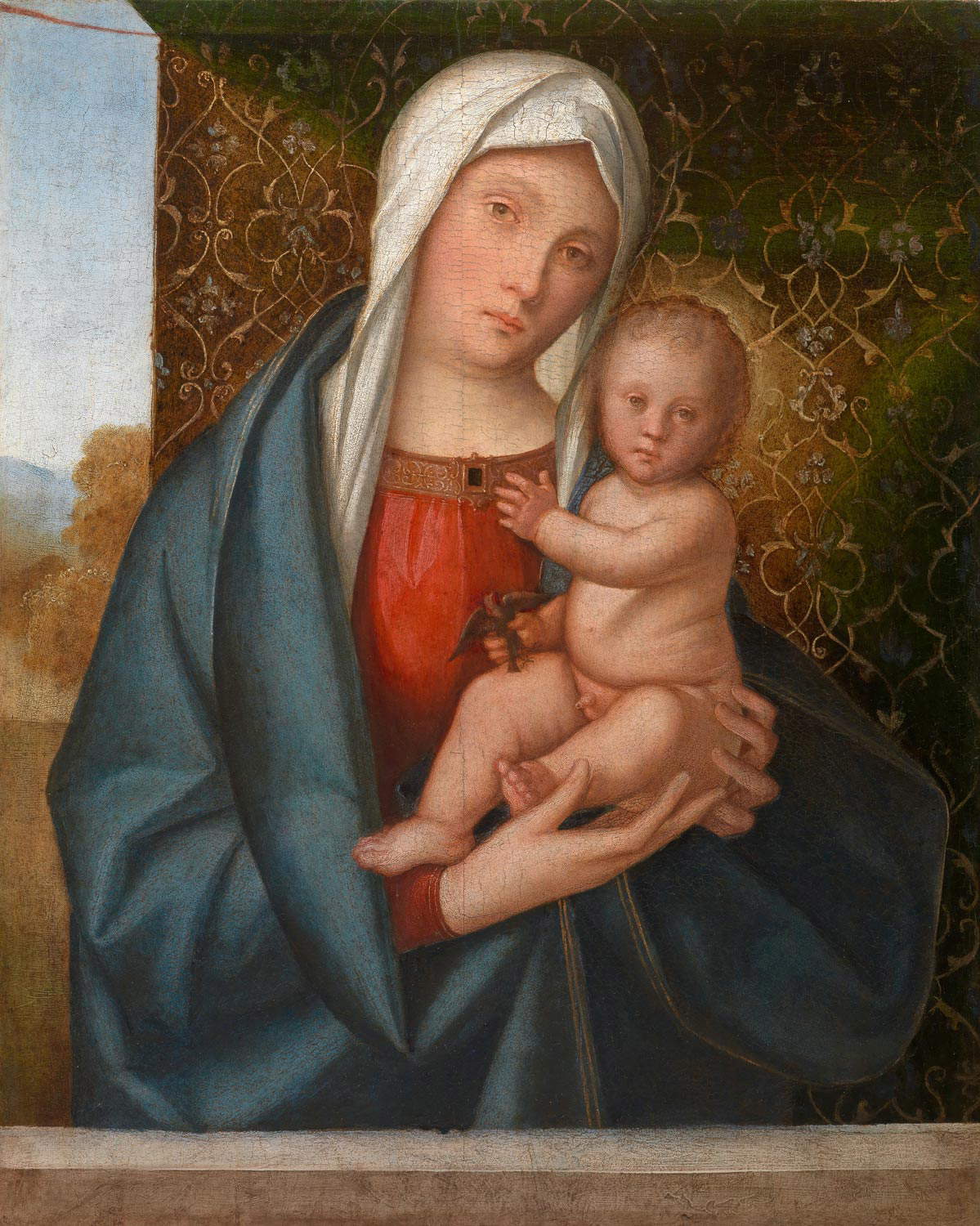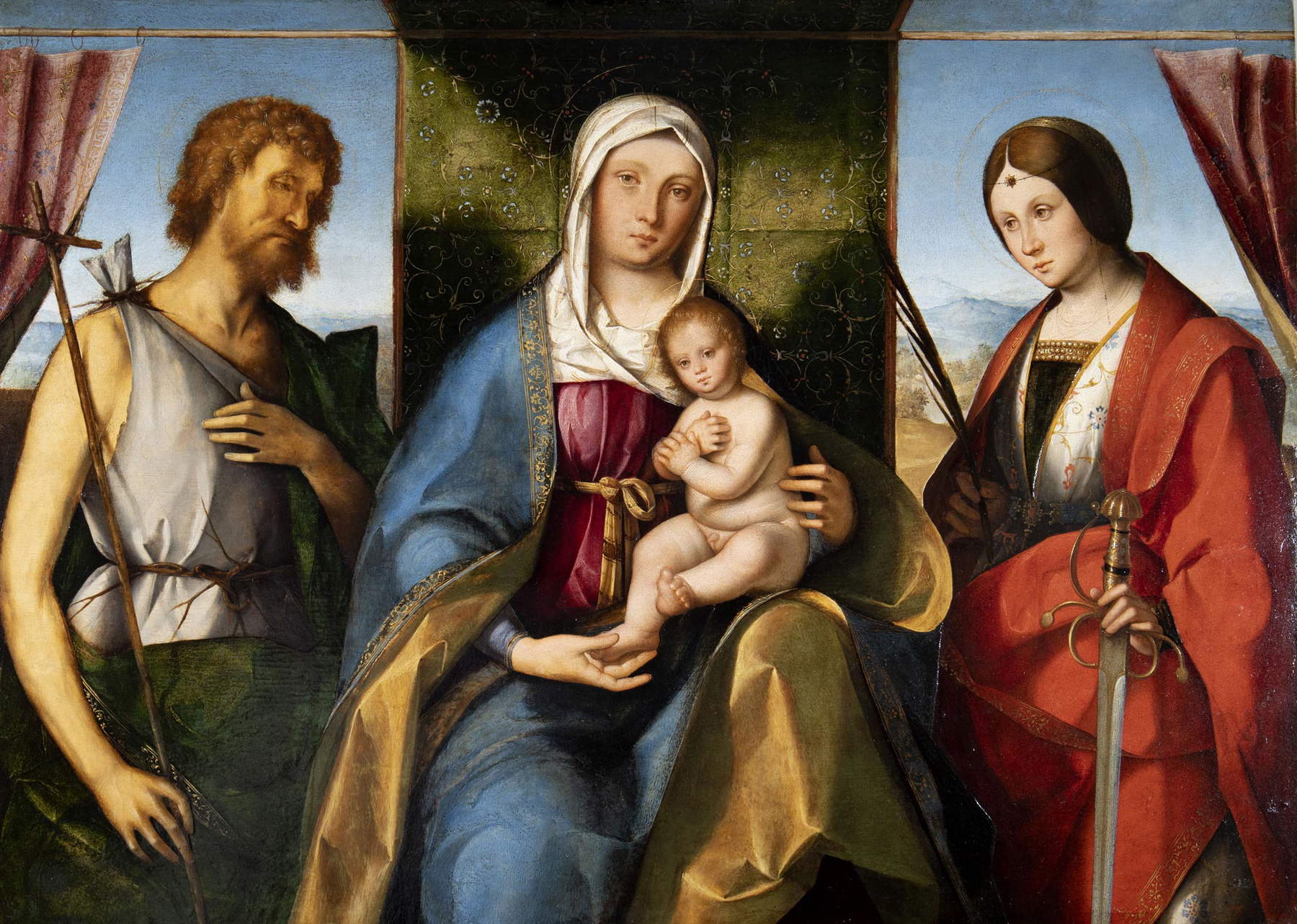In Milan, from May 16 to Sept. 3, 2023, the Pinacoteca di Brera is hosting a new stage of the “Dialogues,” the series of exhibitions-focuses by which the museum brings works from its collection face to face with guests: this is, in particular, the first exhibition specifically dedicated to Boccaccio Boccaccino (Ferrara? 1462/1466 - Cremona, 1525), one of the leading figures of early 16th-century painting in the Po Valley, whose fame is mainly linked to the frescoes of the cycle of the Stories of the Virgin and Christ in Cremona Cathedral (1514-1518). Boccaccino’s painting from the Pinacoteca di Brera, Madonna and Child, will be on display alongside three other paintings by the artist that have never been seen together: the Madonna and Child and Sacred Conversation with Saints John the Baptist and Catherine of Alexandria or Giustina from the Museo Correr in Venice, and theAdoration of the Shepherds from the Museo e Real Bosco di Capodimonte in Naples. The exhibition is curated by Maria Cristina Passoni.
The Brera Pinacoteca’s11th Dialogue, which continues in its tradition begun in 2016 by director James M. Bradburne of comparing masterpieces from the museum with guest works for an enhancement of its collection, originates from the loan of two canvases by Vittore Carpaccio part of the Scuola degli Albanesi cycle in Venice to the monographic exhibition on the painter held at the National Gallery in Washington and at the Doge’s Palace in Venice. As a token of gratitude, the Fondazione Musei Civici di Venezia - MUVE - granted in exchange to the Pinacoteca di Brera two paintings by Boccaccio Boccaccino owned by the Museo Correr, which were joined by a loan from the Museo e Real Bosco di Capodimonte in Naples.
The son of a Cremonese embroiderer active at the Este court, Boccaccino probably trained between Ferrara and Bologna. His first documented work, however, is a lost polyptych for a Genoese church in 1493. Shortly thereafter the artist reappeared in Milan: the Ferrara ambassador Antonio Costabili in the spring of 1497 recommended him to Ercole I d’Este as court painter. During the next three years spent in Ferrara, Boccaccino is able to train a generation of painters-including Garofalo, Nicolò Pisano, Ludovico Mazzolino, and Domenico Panetti-but his stay is suddenly interrupted, perhaps by the murder of his adulterous wife in 1500. It is probable that the artist, maintaining relations with Cremona, settled in Venice, where around 1501 he executed an altarpiece for the church of San Zulian and then a successful series of Madonnas with Child and Sacred Conversations in half-figure, particularly appreciated by local patrons. In Venice, where he is documented until 1506, Boccaccino tried his hand at models by Giovanni Belllini and approached Giorgione’s experiments with light and shadow, marking himself out as one of the first and original interpreters of the Castelfranco master’s painting.
“The choice of Boccaccino is a perfect expression of the Pinacoteca’s ambition to allow visitors to rediscover the moment when the artist was, in the fullest sense of the term, a contemporary artist: innovative, provocative and fresh,” says James Bradburne, director of the Pinacoteca di Brera and the Biblioteca Nazionale Braidense.
The Dialogo focuses on the early period of the painter’s activity, the one between the last years of the 15th century spent in Ferrara, in which the Adoration of the Shepherds in the Capodimonte Museum falls, and 1506, the date in which he is last documented in Venice, the city where the other three works on display saw the light of day. The setting of the Madonna and Child in Brera derives from works by Giovanni Bellini and is dear to Boccaccino in Ferrara and Venice, as seen in the Madonna and Child with Saints John the Baptist and Catherine of Alexandria or Giustina in the Correr Museum. As in Giorgione, the figures in the foreground are illuminated, the landscape fading into the distance. In the Correr painting, he is inspired by a famous prototype by Giovanni Bellini, from whom he also derives the original device of replacing the Baptist’s belt with a woven twig. The pictorial texture, however, reveals an entirely Giorgionesque sensibility in its lingering on luministic and chiaroscuro aspects. TheAdoration of the Shepherds, painted towards the end of his stay in Ferrara, between 1499 and 1500, synthesizes Boccaccino’s experiences at that time. The scene echoes an altarpiece and engraving by Martin Schongauer, and the effects of light and shadow and the idyllic landscape show Giorgione’s early acquaintance in Venice. The rendering of reflections, for example on the hair, reveals contacts with Leonardo’s milieu-especially with Giovanni Antonio Boltraffio-that took place in Milan before April 1497. Finally, in the Correr Museum’s Madonna and Child , executed in Venice, Boccaccino adheres to the theme of the Madonna in adoration of the Child, perfected by Giovanni Bellini in the last decades of the 15th century. Mary prays with clasped hands over the body of her Son lying on a marble parapet, prefiguring the Lamentation over the Dead Christ and thus uniting the two extreme moments of Jesus’ story, birth and death.
The exhibition is enhanced by a small accompanying catalog-dossier entitled Eleventh Dialogue. Boccaccio Boccaccino. At the Thresholds of the Modern Manner in the Po Valley edited by Maria Cristina Passoni (Marsilio publisher, 15 euros) the result of special studies and research, structured in three essays. In it Francesco Ceretti delves into the iconography of the devotional paintings the painter made during his Venetian season, offering a tight chronological serialization on a stylistic basis. Cristina Quattrini focuses instead on the artist’s still mysterious training between Genoa, Milan and Ferrara, putting forward a hypothesis on the reason for his presence in Milan between 1496 and 1497. Finally, Maria Cristina Passoni traces Boccaccino’s relationship with Venice starting from documents, including unpublished ones, identifying the possible pathways for his landing in the lagoon and for his early and constantly updated approach to Giorgione’s painting.

 Boccaccio Boccaccino
Boccaccio Boccaccino
 Boccaccio Boccaccino
Boccaccio Boccaccino
 |
| At the Pinacoteca di Brera an exhibition entirely dedicated to Boccaccio Boccaccino |
Warning: the translation into English of the original Italian article was created using automatic tools. We undertake to review all articles, but we do not guarantee the total absence of inaccuracies in the translation due to the program. You can find the original by clicking on the ITA button. If you find any mistake,please contact us.